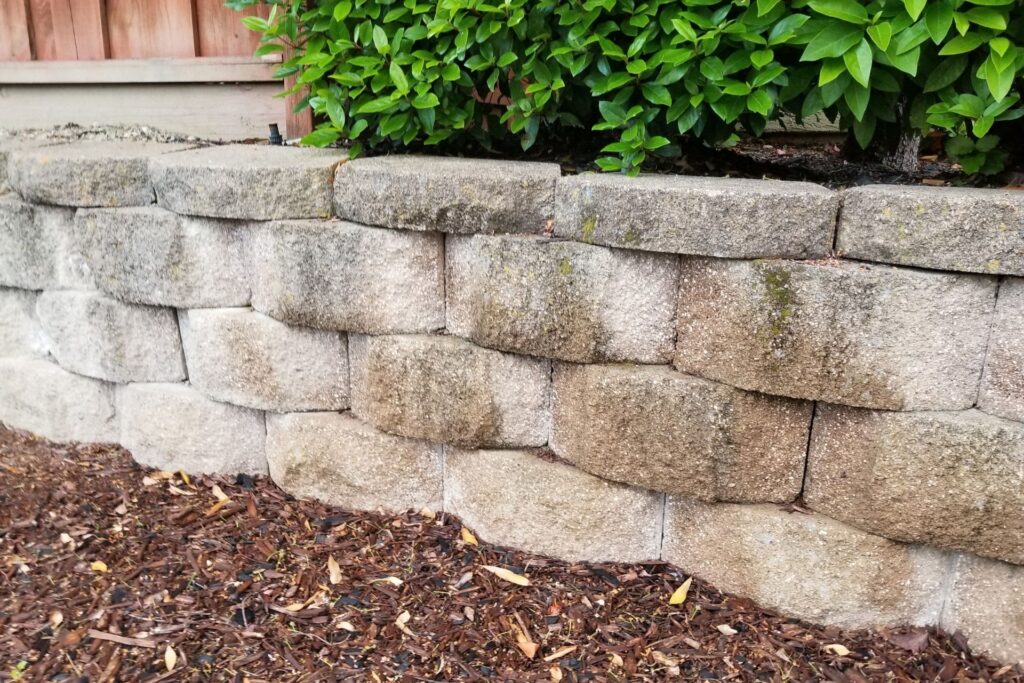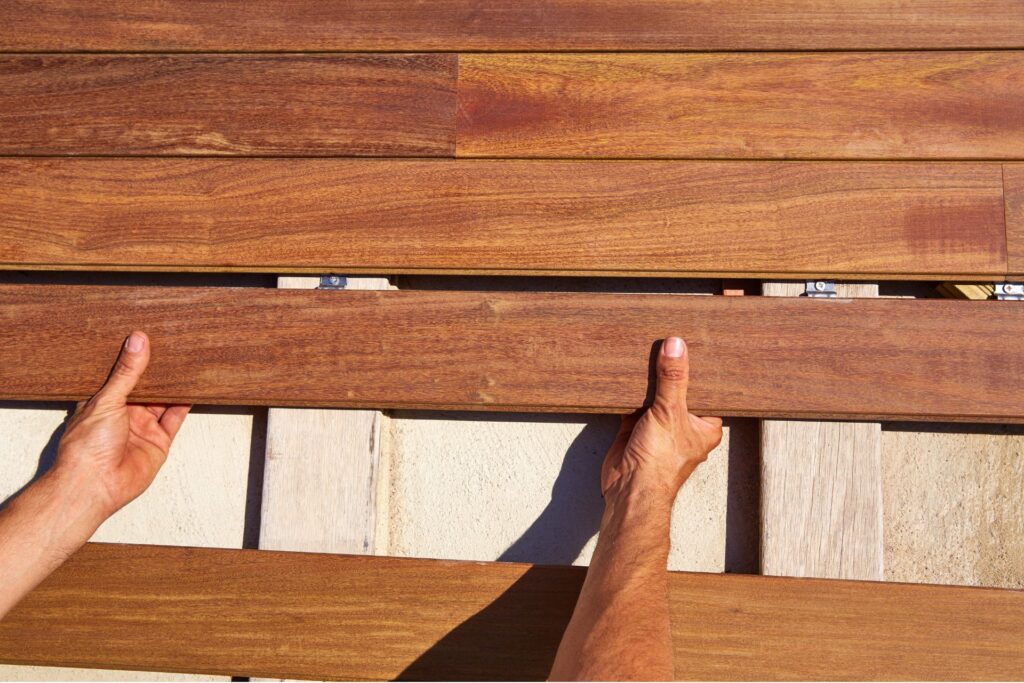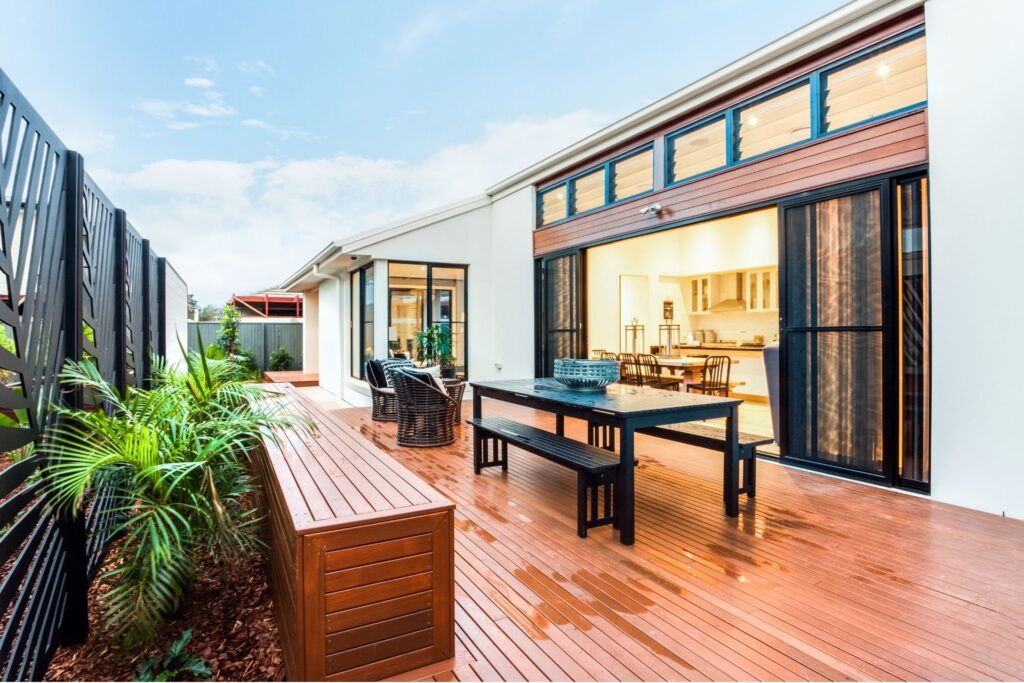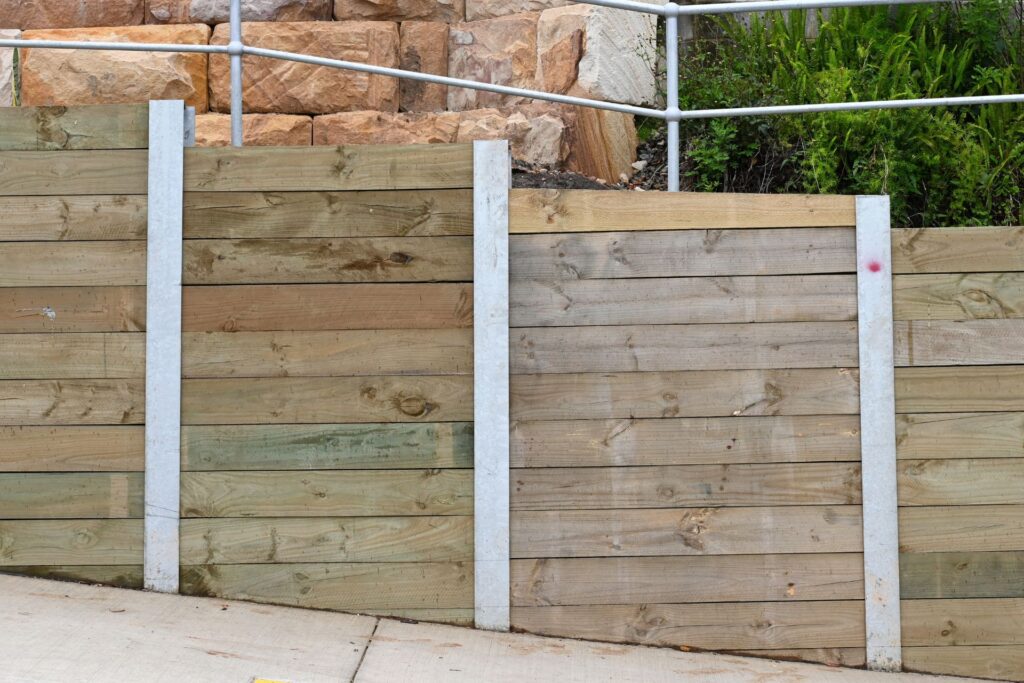Welcome to the ultimate guide on navigating the costs of building a retaining wall in Perth. Whether you’re looking to enhance your property’s landscape, prevent soil erosion, or simply create more usable land, understanding the intricacies of retaining wall construction is crucial. This comprehensive article is tailored specifically for Perth residents, offering a deep dive into everything from the impact of local climate and terrain on your construction project to the range of materials available and their associated costs. We’ll also explore the factors that can influence your budget, including design complexity, labor rates, and regulatory considerations. By the end of this guide, you’ll be equipped with the knowledge to make informed decisions, ensuring your retaining wall project is both successful and cost-effective. So, let’s unravel the mystery of building a retaining wall in Perth together, turning daunting decisions into straightforward choices with our expert advice.
On average, the cost to build a retaining wall in Perth ranges from $150 to $600 per square meter. This price variation depends on several key factors, including the choice of materials (with concrete and stone being premium options, while wood and bricks are more budget-friendly), the size and complexity of the wall’s design, and labor costs. Additional considerations like permits, site accessibility, and any required landscaping work can also influence the overall expense. To ensure you receive a cost-effective solution that meets your needs, it’s advisable to seek quotes from local professionals, taking into account their experience and the specific requirements of your project.
- What Is A Retaining Wall?
- Key Factors Influencing The Cost
- Material Choices: Balancing Cost with Aesthetics
- Size and Scale: The Impact of Dimensions on Costs
- Design Complexity: Simple Versus Complex
- Labor Costs: The Perth Perspective
- Permits and Regulations: Navigating Local Requirements
- Site Accessibility: Logistics and Cost Implications
- Navigating Construction Costs with Confidence
- The Average Cost Of Building A Retaining Wall In Perth
- The Unbeatable Advantages Of Investing In A Quality Retaining Wall
- Planning Your Budget
- Choosing The Right Contractor
- DIY VS. Professional Installation
- FAQs: About Cost Of Building Retaining Walls In Perth
- Conclusion
- Find A Retaining Wall Company Near You
What Is A Retaining Wall?
Retaining walls are a fundamental component in construction and landscaping, serving both functional and aesthetic purposes. These structures are ingeniously designed to hold or retain soil behind them, providing a solution to the challenges of sloped land, erosion, and land management. By understanding the definition, types, and importance of retaining walls, particularly in regions like Perth with its unique landscape and climate, one can appreciate their significance in urban and rural development.
Definition and Purpose
A retaining wall is a rigid wall used for supporting the soil mass laterally so that the soil can be retained at different levels on the two sides. Its primary purpose is to battle gravity and prevent the movement of soil, making it a crucial element in areas with hilly terrains or where soil erosion could pose a problem. Beyond their practicality, retaining walls can also enhance the aesthetics of a landscape, creating visually appealing terraces, gardening spaces, and more.
Different Types of Retaining Walls and Their Common Uses
Retaining walls come in various types, each designed to cater to specific needs and soil conditions. The most common types include:
Gravity Walls: These rely on their mass (stone, concrete, or other heavy materials) to resist pressure from behind and are often used in landscaping and small retaining needs.
Cantilevered Walls: Engineered for strength, these walls use a lever arm mechanism to provide support to large masses of soil. They are typically made from reinforced concrete or masonry.
Sheet Piling Walls: Ideal for spaces with soft soils, these walls are made of steel, vinyl, or wood planks driven into the ground. They are commonly used in waterfront properties and as temporary retaining solutions in construction sites.
Anchored Walls: This type involves the use of cables (usually encased in concrete) that are anchored into the soil or rock behind the wall. They are used in situations where high loads are expected or where the wall needs additional reinforcement.
Importance in Perth’s Landscape and Climate
In Perth, the landscape is diverse, encompassing coastal areas, hills, and flat lands. This variation in topography, combined with the region’s climate, underscores the importance of retaining walls. Perth experiences a Mediterranean climate with wet winters and dry summers, a pattern that can exacerbate soil erosion and make land management challenging. Retaining walls play a crucial role in preventing soil erosion, managing stormwater runoff, and enhancing usable land space through the creation of terraced levels on slopes.
Moreover, the aesthetic aspect of retaining walls contributes significantly to the visual appeal of Perth’s residential and commercial landscapes. They offer creative solutions for garden beds, outdoor living areas, and boundary walls, integrating seamlessly with the natural beauty and architectural style of the region.
In conclusion, retaining walls are more than just structures; they are essential elements that contribute to the safety, functionality, and beauty of landscapes. Understanding their types and applications, especially in the context of Perth’s unique environmental conditions, highlights their significance in shaping our living spaces. Whether for practical soil retention or aesthetic landscape design, retaining walls continue to be a key component in urban and rural development.
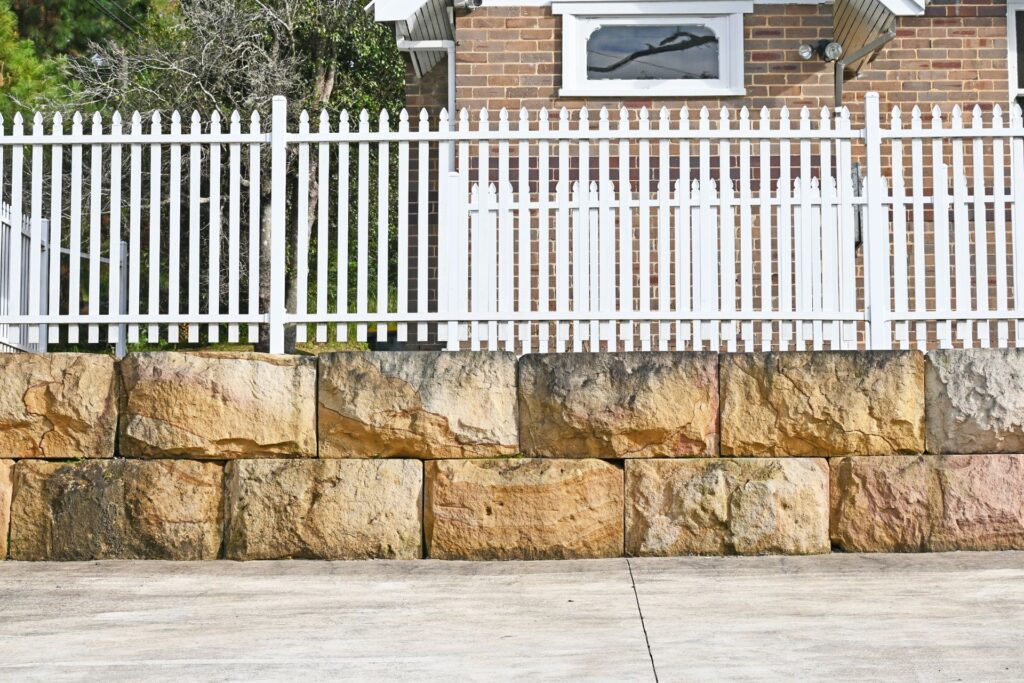
Key Factors Influencing The Cost
Today, we’re diving into an essential aspect of construction projects: the key factors influencing the cost. Whether you’re a homeowner in Perth planning to add a distinctive touch to your property with a new wall or a contractor looking for insights, understanding these variables will help you navigate your project’s financial landscape more effectively.
When it comes to constructing a wall, several pivotal factors determine the overall expenditure. Below, we’ll explore each element in detail, providing you with the knowledge to make informed decisions for your project.
Material Choices: Balancing Cost with Aesthetics
The selection of materials is at the forefront of influencing construction costs. Each material, from classic wood and bricks to durable concrete and elegant stone, carries its own set of costs and benefits. Wood, with its natural charm, may be less expensive but requires maintenance. Stone and bricks, on the other hand, offer longevity and distinct aesthetics but at a higher initial investment. Concrete is celebrated for its strength and versatility, making it a cost-effective option for many. Understanding the trade-offs between these materials in terms of cost, durability, and appearance is crucial in selecting the right option for your wall.
Size and Scale: The Impact of Dimensions on Costs
The dimensions of the wall significantly affect both material and labor costs. A larger wall not only requires more materials but also more time and labor to construct, driving up the overall cost. This direct relationship between the size of the project and its cost highlights the importance of precise planning and measurement in the early stages of your construction project.
Design Complexity: Simple Versus Complex
The complexity of your wall’s design also plays a critical role in determining the budget. Simple designs are straightforward, require less time, and, consequently, are less costly. In contrast, complex designs that involve intricate patterns or unique architectural features can significantly increase the time, skill level required, and, ultimately, the cost of the project.
Labor Costs: The Perth Perspective
In Perth, as in many other places, the cost of skilled labor is a significant factor in the overall project budget. The availability of skilled laborers, their experience, and the demand for construction services can all influence labor costs. Engaging with local contractors early in the planning process can provide a clearer picture of the labor costs involved.
Permits and Regulations: Navigating Local Requirements
Perth-specific building regulations and the need for permits can also impact the cost of wall construction. Familiarizing yourself with local requirements and incorporating permit costs into your budget from the outset can prevent unexpected expenses and delays.
Site Accessibility: Logistics and Cost Implications
Finally, the accessibility of your construction site can influence the project’s total cost. Sites that are difficult to access may require special equipment or additional labor to transport materials, thereby increasing the overall cost. Considering site accessibility during the planning phase can help in budgeting accurately for these logistical challenges.
Navigating Construction Costs with Confidence
Understanding the key factors that influence the cost of wall construction allows homeowners and contractors in Perth to plan more effectively, making informed decisions that balance budget constraints with desired outcomes. By carefully considering material choices, size and scale, design complexity, labor costs, local permits, and site accessibility, you can navigate the financial aspects of your project with greater confidence and clarity.
Embarking on a construction project is no small feat, but with the right knowledge and preparation, you can achieve a balance between cost, quality, and aesthetics, resulting in a wall that not only enhances your property but also stands the test of time.

The Average Cost Of Building A Retaining Wall In Perth
This well-structured and informative guide on the average cost of building a retaining wall in Perth involves a deep dive into the essential factors influencing pricing, material choices, and the local construction landscape. This section aims to deliver comprehensive insights into what Perth homeowners can expect when budgeting for a retaining wall, ensuring clarity and confidence in your project planning.
Understanding the Costs per Square Meter
The cost of building a retaining wall in Perth varies widely, primarily due to the materials and design complexities involved. On average, homeowners can anticipate spending anywhere from $250 to $650 per square meter. This range accounts for the selection of basic concrete blocks at the lower end to premium natural stone or custom-designed options at the higher end. It’s crucial to consider that while initial costs may steer you towards more affordable materials, the longevity and aesthetic appeal of higher-end materials could offer better value in the long term.
Factors Influencing Price Variations
Several key factors contribute to the wide range of prices in the Perth market for retaining walls:
Material Choice: The selection of material significantly impacts the overall cost. Concrete and timber are popular for their affordability and functionality. In contrast, natural stone and poured concrete offer a blend of durability and aesthetic appeal but at a higher cost.
Design Complexity: Simple, straight walls are less expensive than curved or tiered designs, which require more intricate construction techniques and additional materials.
Site Accessibility: The ease with which contractors can access your site can affect labor costs. Difficult access could lead to higher prices due to the extra time and equipment needed.
Height and Length of the Wall: Larger walls require more materials and labor, directly influencing the cost. Additionally, walls over a certain height may require engineering input and council approvals, adding to the expense.
Real-Life Cost Insights from Local Contractors
To give you a clearer picture, here are some generalized quotes from local contractors in Perth, reflecting the current market trends:
- For a basic concrete block wall, you’re looking at around $280 per square meter. However, if you’re aiming for something more aesthetic, like natural stone, the cost can go up to $600 per square meter or more, depending on the stone type and design complexity.” – Contractor A.
- Access to the site and the wall’s height can significantly affect the final cost. For challenging sites, you might need to budget an additional 20-30% on top of the base cost.” – Contractor B.
- Remember, opting for high-quality materials and a reputable contractor might seem expensive upfront, but it pays off in the long run with less maintenance and a longer lifespan for your retaining wall.” – Contractor C.
Building a retaining wall in Perth is an investment that not only enhances your property’s aesthetics but also its functionality and value. By understanding the average costs involved and the factors affecting these prices, you can make informed decisions that align with your budget and desired outcome. Remember, obtaining multiple quotes and discussing your specific needs and constraints with local contractors can help you achieve the best balance between cost, quality, and aesthetics for your retaining wall project.

The Unbeatable Advantages Of Investing In A Quality Retaining Wall
A Bulwark Against Soil Erosion
In the picturesque but often unpredictable climate of Perth, where the terrain can vary from sandy beaches to rugged bushland, the importance of managing soil erosion cannot be overstated. A quality retaining wall acts as a steadfast guardian against the forces of nature, preserving your land’s integrity. By holding back soil on slopes and preventing the downward slide of the earth due to gravity, retaining walls mitigate the risk of erosion, which can be exacerbated by heavy rains and winds. This is not just about protecting your property; it’s about conserving the landscape’s natural beauty and ecological balance.
Expanding Horizons: Increased Usable Land
One of the most transformative benefits of a retaining wall is its ability to reshape your property’s contours. Sloped land, while offering unique vistas, often limits the functional use of your outdoor space. By installing a retaining wall, you can create terraces or flat areas, effectively increasing the usable land on your property. This newfound space opens up possibilities for gardens, patios, or even a playground for the kids. It’s like adding a new dimension to your home, where once there was an unusable slope, now stands functional beauty.
Boosting Property Value through Aesthetics and Functionality
The addition of a well-designed retaining wall does more than just serve a functional purpose; it significantly enhances your property’s aesthetics and, by extension, its market value. A retaining wall, when thoughtfully integrated into your landscape design, can be a striking architectural feature that adds character and depth to your outdoor space. Prospective buyers or admirers will see not just a wall, but a testament to the care and investment you’ve put into your property. This perceived value is a powerful factor when it comes to real estate transactions, making your home stand out in a competitive market.
The Long Haul: Longevity and Durability Equals Cost Savings
Investing in a high-quality retaining wall might seem like a significant upfront cost, but it’s a decision that pays dividends in the long run. The right materials and construction techniques can ensure that your wall withstands the test of time, enduring Perth’s dynamic weather without faltering. This longevity means fewer repairs and less maintenance, translating to considerable cost savings over the years. Moreover, the peace of mind that comes from knowing your property is protected and enhanced by a durable retaining wall is priceless.
A quality retaining wall offers a multitude of benefits, from practical solutions like erosion control and expanded usable land to aesthetic enhancements that boost property value. More importantly, the investment in a durable and well-designed retaining wall is an investment in the future of your property, saving costs and adding value over time. For homeowners in Perth and beyond, understanding these benefits is the first step towards transforming your landscape into a more beautiful, functional, and valuable space.
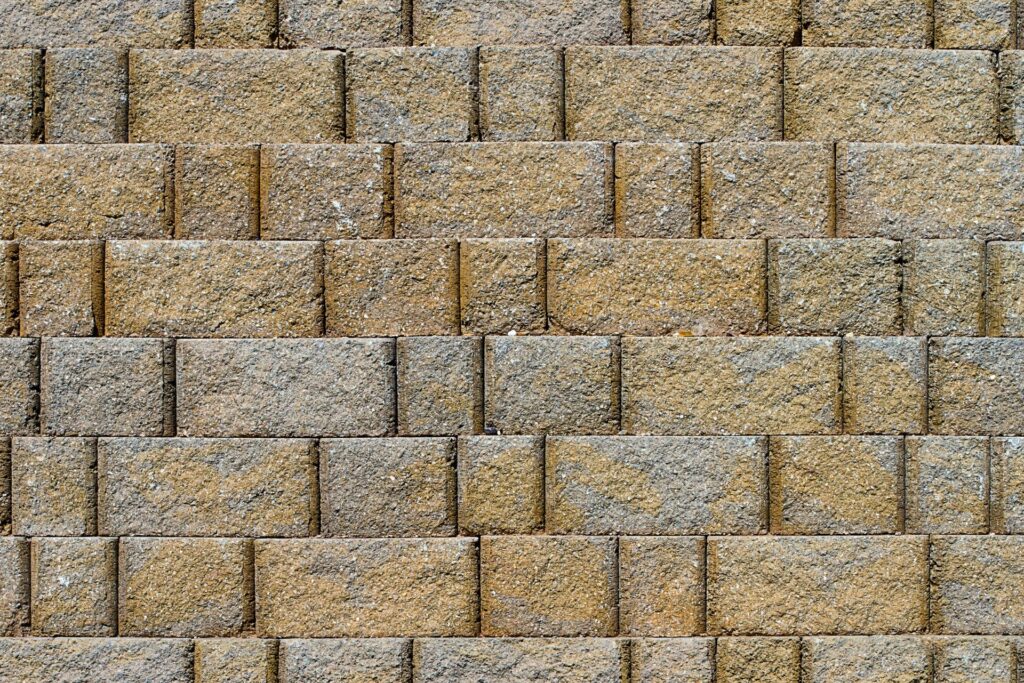
Planning Your Budget
Planning your budget for a retaining wall project is a crucial step in ensuring the success and sustainability of your construction efforts. This guide aims to provide you with practical advice and insights to help you navigate the financial aspects of your project efficiently. Whether you’re a homeowner looking to enhance your property or a professional contractor, these strategies will assist you in making informed decisions, maximizing your investment, and ensuring your retaining wall project is both aesthetically pleasing and structurally sound.
Tips on How to Budget for a Retaining Wall Project
The first step in budgeting for your retaining wall project is to understand the scope and requirements of your endeavor. Start by evaluating the size and complexity of the wall, the materials you intend to use, and any potential landscaping or excavation that may be necessary. Here are a few tips to help you establish a realistic budget:
1. Research Material Costs: Retaining wall materials can vary significantly in price, from more affordable options like timber and concrete blocks to more expensive choices like natural stone. Prices can also fluctuate based on quality, availability, and the supplier. Spend time researching and comparing material costs to find the best fit for your budget and project needs.
2. Factor in Labor Expenses: If you’re planning to hire professionals, labor costs can account for a significant portion of your budget. It’s essential to get an accurate estimate of these expenses upfront. If you’re considering a DIY approach, assess whether you have the necessary skills, tools, and time to complete the project to a high standard.
3. Include a Contingency Fund: Unexpected expenses can arise during construction projects. Including a contingency fund of around 10-20% of your total budget can help you manage unforeseen costs without compromising the quality or scope of your project.
The Importance of Getting Multiple Quotes
Obtaining multiple quotes from contractors is not just about finding the lowest price; it’s about ensuring value for money and quality workmanship. Here’s why getting multiple quotes is essential:
Comparative Analysis: Multiple quotes allow you to compare prices, timelines, and the scope of work offered by different contractors. This comparison can help you understand the market rate and what to expect from your budget.
Assessing Professionalism: Interacting with several contractors gives you insight into their professionalism, communication skills, and reliability. Choose someone who understands your vision and shows genuine interest in your project.
Negotiation Leverage: Having multiple quotes can provide you with leverage to negotiate better terms with your preferred contractor, whether it’s about price, timelines, or specific project details.
Considering Long-Term Maintenance Costs in the Initial Budget
When planning your budget, it’s crucial to look beyond the immediate costs of materials and labor. Consider the long-term maintenance requirements and expenses associated with the retaining wall materials you choose. For instance, wood may require regular treatment to prevent rot and termites, while stone and concrete blocks might need less frequent but more specialized maintenance.
Selecting materials that are durable and suited to your climate can reduce long-term maintenance costs and extend the life of your retaining wall. Additionally, proper drainage solutions and construction techniques can minimize future issues, saving you money and hassle in the long run.
In conclusion, thoughtful planning and budgeting are key to the success of your retaining wall project. By researching material costs, getting multiple quotes, and considering long-term maintenance expenses, you can create a budget that ensures a balance between quality, aesthetics, and sustainability. Remember, a well-planned budget is an investment in the longevity and success of your retaining wall project.
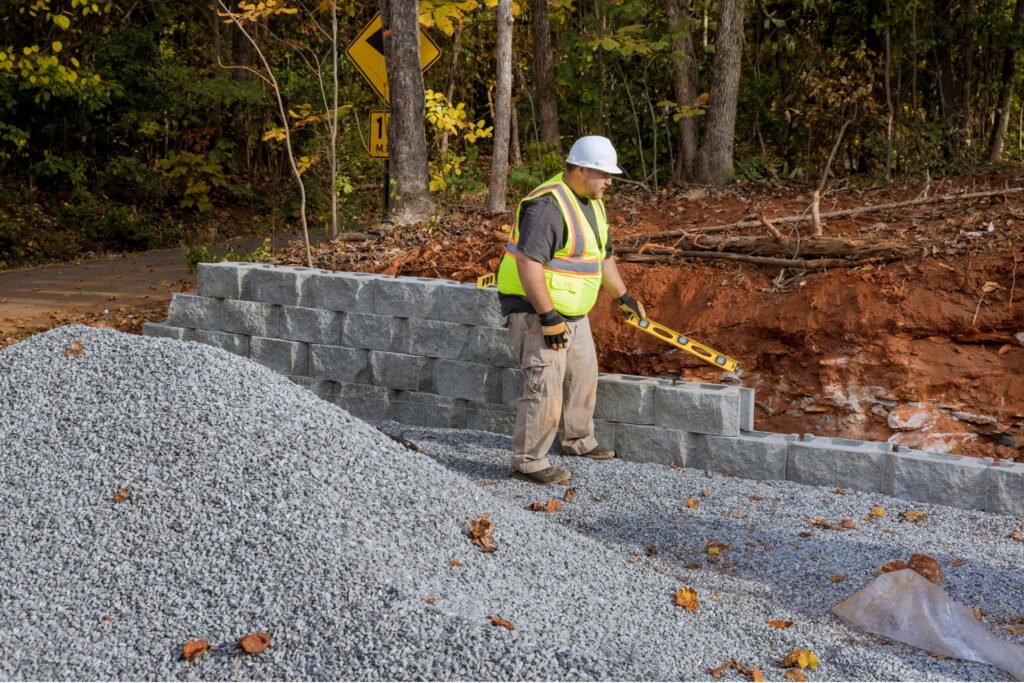
Choosing The Right Contractor
Choosing the right contractor for your construction or renovation project is a pivotal decision that can significantly impact the success and smooth progression of your project. It’s not just about finding someone who can do the job, but finding the right fit for your specific needs, preferences, and budget. In this detailed guide, we’ll walk through the essential steps and considerations in selecting a contractor that aligns with your project goals, ensuring a positive and fruitful collaboration.
What to Look for in a Contractor
The search for a dependable contractor should be thorough and deliberate, focusing on several key factors:
Licensing: Always verify that a contractor is licensed to work in your area. A license is more than just a piece of paper; it’s proof that they have met the required standards and qualifications set by local authorities. This also ensures that they are familiar with local building codes and regulations, which is crucial for the legality and safety of your project.
Experience: Experience is invaluable in the construction industry. Look for a contractor with a solid track record in projects similar to yours. Experienced contractors are better equipped to handle unexpected issues and can bring a wealth of knowledge and expertise to your project.
Reviews: In the digital age, online reviews and testimonials are a great resource for gauging the reliability and quality of a contractor’s work. Look for feedback from past clients to get an idea of their working style, communication, and ability to meet deadlines and budgets.
Portfolio: A contractor’s portfolio is a visual testament to their skills and capabilities. Reviewing their past projects can give you insights into their quality of work, creativity, and whether their style matches your vision.
The Importance of Detailed Contracts and Clear Communication
Once you’ve found a contractor you’re interested in working with, the next steps are crucial:
Detailed Contracts: Insist on a detailed contract that outlines every aspect of the project, from the scope of work and materials used to timelines and payment schedules. A comprehensive contract not only provides clarity and accountability but also protects both you and the contractor.
Clear Communication: Effective communication is the foundation of any successful project. Establish clear lines of communication from the outset. Discuss your expectations, concerns, and any questions you may have. Regular check-ins and updates can help keep the project on track and ensure that any issues are addressed promptly.
Working with Your Contractor to Stay Within Budget Without Compromising Quality
Balancing budget constraints with the desire for quality work can be challenging, but it’s not impossible. Here’s how you can work with your contractor to achieve this balance:
Be upfront about your budget: A clear understanding of your budget allows your contractor to make appropriate recommendations and adjustments without compromising the quality of the work.
Prioritize your needs and wants: Identify which aspects of your project are non-negotiable and where you might be willing to make compromises or explore cost-effective alternatives.
Explore material and design alternatives: Your contractor can be a valuable resource in finding cost-effective materials and design solutions that meet your aesthetic and functional requirements without breaking the bank.
Selecting the right contractor is a critical step that sets the tone for your entire project. By focusing on licensing, experience, reviews, and portfolios, insisting on detailed contracts, maintaining clear communication, and working collaboratively to balance budget and quality, you can embark on your project with confidence, knowing you’ve taken the steps necessary to ensure a successful outcome. Remember, a good contractor-client relationship is built on trust, transparency, and shared goals, leading not only to a successful project but also to a rewarding experience.
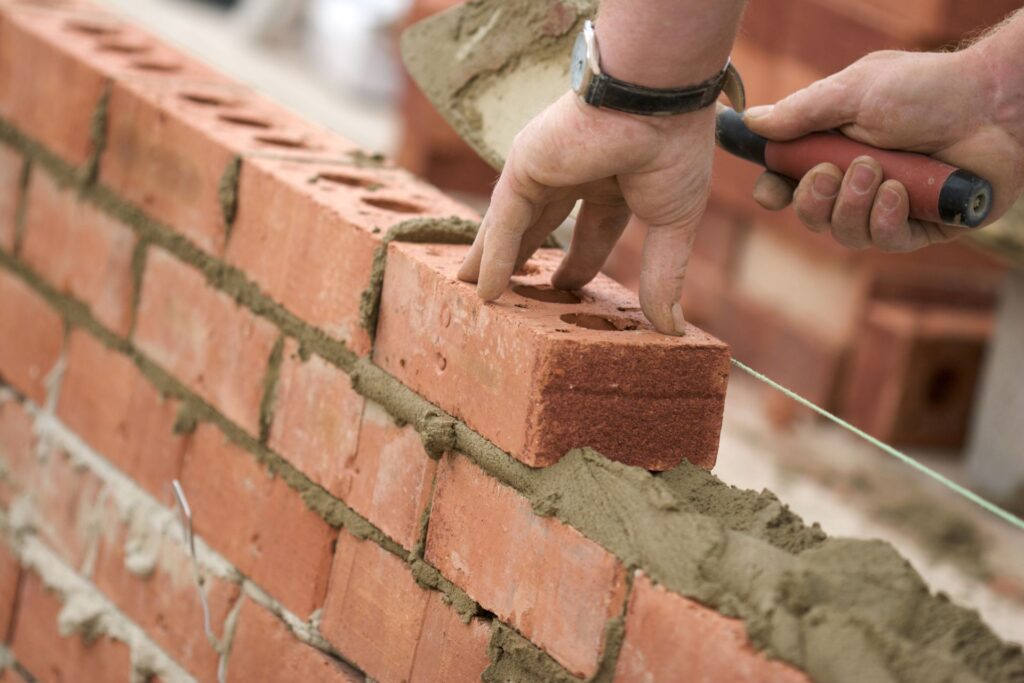
DIY VS. Professional Installation
When it comes to building retaining walls, homeowners are often caught in a dilemma: to dive into a DIY project or to hire professionals. This decision not only impacts the cost and time involved but also affects the overall success and durability of the retaining wall. Let’s explore the pros and cons of both approaches, identify scenarios where a professional touch is indispensable, and consider the safety and regulation aspects vital for a successful retaining wall project.
Understanding the Pros and Cons of DIY Retaining Wall Projects
Pros
Cost Savings: Perhaps the most tempting advantage of going DIY is the potential savings. By eliminating labor costs, you can significantly reduce the overall expense of your retaining wall project.
Flexibility and Control: DIY projects offer you complete control over every aspect, from choosing materials to setting your timeline. This flexibility allows for a personalized touch and the satisfaction of building something with your own hands.
Skill Development: Embarking on a DIY retaining wall project can enhance your home improvement skills, providing a rewarding learning experience.
Cons
Time-Consuming: DIY projects demand a significant time investment. Without professional expertise, tasks may take longer to complete, potentially stretching over several weekends or even months.
Risk of Mistakes: The lack of experience can lead to errors in construction, design, or material selection, possibly requiring costly corrections later.
Physical Labor: Building a retaining wall is labor-intensive, requiring heavy lifting and manual work that might be challenging for some homeowners.
When to Opt for Professional Installation
While DIY projects have their charm, certain situations call for the expertise of professionals:
Complex Terrain: Uneven or sloping land can complicate retaining wall construction, necessitating specialized knowledge to ensure stability and prevent erosion.
Large Projects: For large-scale retaining walls, the logistical, technical, and safety challenges often exceed the capacity of DIY efforts.
Permit and Regulation Compliance: Professionals are well-versed in local building codes and can navigate the permit process, ensuring your project complies with all regulations.
The Importance of Safety and Regulation Compliance
Safety and adherence to building codes are paramount in any construction project, especially when building a retaining wall.
Safety Considerations: Professional installers are trained to handle the risks associated with construction, from operating heavy machinery to ensuring the structural integrity of the wall. DIY enthusiasts may overlook crucial safety measures, putting themselves and others at risk.
Regulation Knowledge: Retaining walls often requires adherence to specific building codes, which vary by location. Professionals ensure that the design, materials, and construction methods meet all local regulations, avoiding potential legal issues and fines.
Making the Right Choice
Deciding between DIY and professional installation for your retaining wall project boils down to assessing your skills, understanding the project’s complexity, and considering safety and regulation requirements. While DIY can be a rewarding venture for smaller, simpler projects, professional expertise becomes crucial for complex, large-scale, or regulated projects. By carefully weighing the pros and cons, homeowners can make an informed decision that ensures the success and longevity of their retaining wall.
In conclusion, whether you decide to take the DIY route or hire professionals, understanding the intricacies of building a retaining wall will empower you to manage your project effectively. Remember, the key to a durable, aesthetically pleasing retaining wall lies in meticulous planning, adherence to safety standards, and compliance with local regulations.
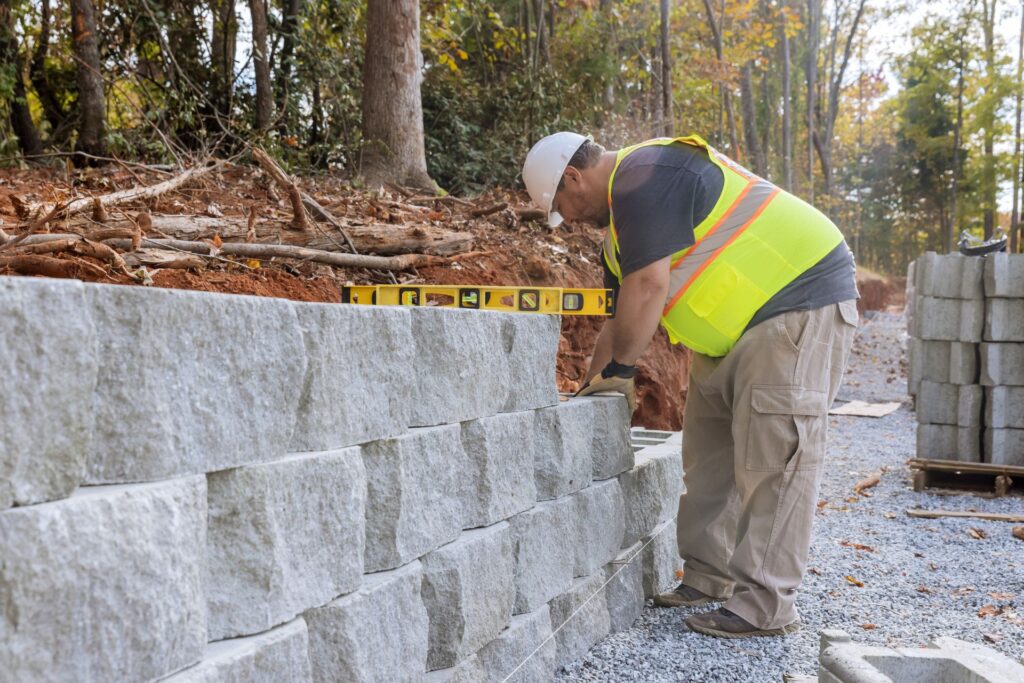
FAQs: About Cost Of Building Retaining Walls In Perth
Conclusion
In wrapping up this insightful exploration, we’ve navigated through the essential elements that shape our topic, delving deep into the intricate details and considerations that matter most. It’s crucial for you, our readers, to take a step back and thoughtfully reflect on the various factors we’ve discussed, ensuring you have a comprehensive understanding of the subject at hand. Given the complexity and the nuanced nature of this matter, seeking guidance from seasoned professionals who can provide you with tailored, accurate quotes is a wise move. We cannot emphasize enough the value of reaching out to local experts who can offer you personalized advice, fits your specific needs and circumstances. Their expertise could be the key to unlocking more nuanced insights and solutions, making your journey through this topic not just informative but also immensely beneficial. So, we encourage you to take that proactive step, connect with the right professionals, and pave the way for informed decisions that are best suited to your unique situation.
Find A Retaining Wall Company Near You
About the Author:
Mike Veail is a recognized digital marketing expert with over 6 years of experience in helping tradespeople and small businesses thrive online. A former quantity surveyor, Mike combines deep industry knowledge with hands-on expertise in SEO and Google Ads. His marketing strategies are tailored to the specific needs of the trades sector, helping businesses increase visibility and generate more leads through proven, ethical methods.
Mike has successfully partnered with numerous companies, establishing a track record of delivering measurable results. His work has been featured across various platforms that showcase his expertise in lead generation and online marketing for the trades sector.
Learn more about Mike's experience and services at https://theleadguy.online or follow him on social media:

